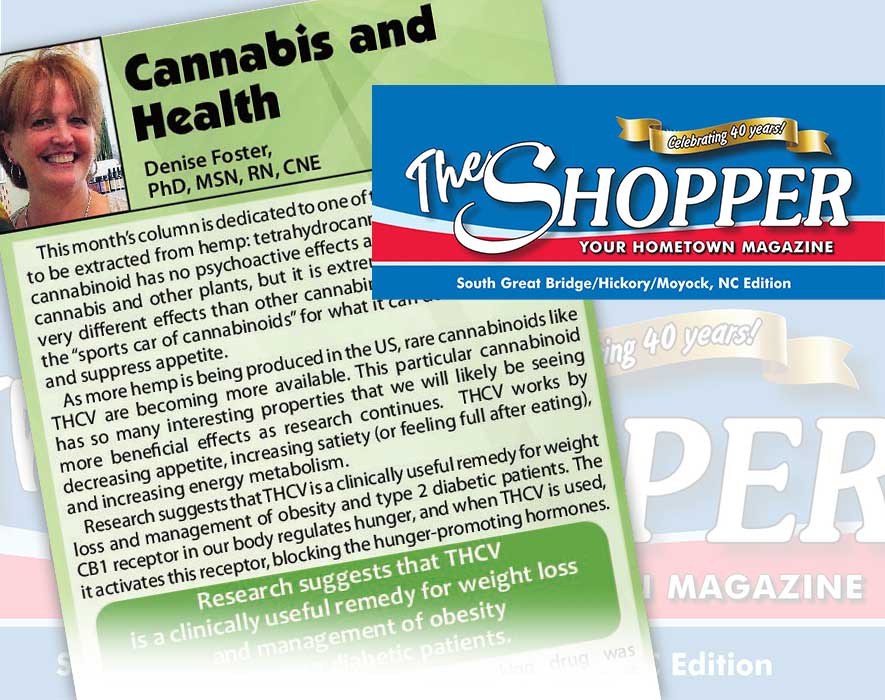
- Cannabis
-
by Denise Foster
The most psycho-impairing compound found in cannabis is delta-9 tetrahydrocannabinol or THC. THC mimics our own endocannabinoid anandamide, our “bliss molecule.” Because THC can easily cross into the brain as a fat-loving compound, it fools the brain at the CB1 receptor into thinking that it is our body’s own endocannabinoid, thereby causing euphoria.
Around 10 mg of THC is considered a high dose, and the FDA-approved synthetic THC pharmaceutical drug, dronabinol (Marinol), is dosed in 2.5 and 5mgs dosages. THC concentrations in medicinal cannabis can start at 10 percent, while recreational cannabis can be as high as 35 percent. When cannabis was first discovered as a landrace species, THC concentrations were between one and four percent. Over the years, as the DEA began to track THC levels in drug raids, it became apparent that plants were being cultivated to increase their THC levels artificially to feed the black market.
In contrast, THC is not found in large concentrations in hemp, especially since the 2018 Agricultural Improvement Act limits the THC concentration in hemp to a maximum of 0.3 percent. Currently, there is legislation before Congress to raise this limit to one percent, as hemp farmers are required to destroy any hemp crops that test higher than this level. For reference, the THC level in hemp is limited to 1.5 percent in Switzerland, while in England and Australia, it is limited to 0.2 percent and 0.35 percent, respectively.
One of the most surprising effects of THC is its ability to inhibit cancer cell growth and spread.
THC has not been linked to overdose or fatalities in humans. Because it does not bind with sufficient strength to the CB1 receptor, THC does not cause respiratory arrest or severe organ failure, even at a very high dose. However, inappropriately high THC doses have been linked to other psychological and physiological concerns: paranoia, impaired memory, anxiety, hallucinations, psychomotor impairment, and a condition known as cannabis hyperemesis syndrome, which is characterized by severe GI upset.
Therapeutic benefits of THC include anti-emetic properties, especially in chemotherapy-induced nausea and vomiting. THC stimulates appetite and reduces chronic pain. Research shows promising results using THC as a treatment for substance abuse since it can replace or supplement opioid and medication-assisted therapies. THC is also beneficial as an anti-spasmodic, reducing spasms associated with multiple sclerosis and amyotrophic lateral sclerosis. THC in higher doses can be used to calm the exaggerated muscle spasms and tremors associated with Tourette’s and Parkinson’s disease.
One of the most surprising effects of THC is its ability to inhibit cancer cell growth and spread. It does this by stopping the cells from reproducing. Additionally, THC also blocks blood vessel growth to the cancer tissues, decreasing its invasiveness and metastasis. Through several different mechanisms, THC signals the cancer cell to commit suicide, or it starves the cancer tissues of blood flow.

